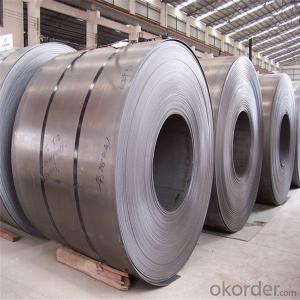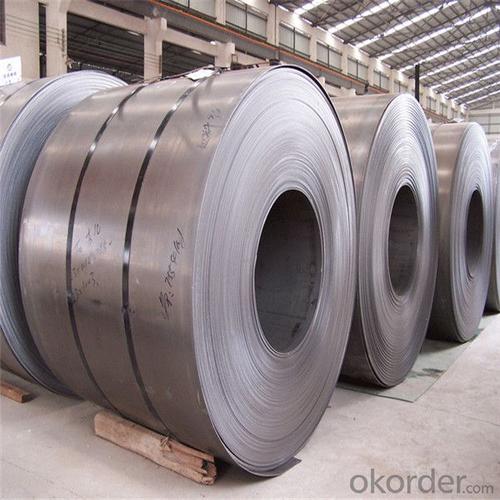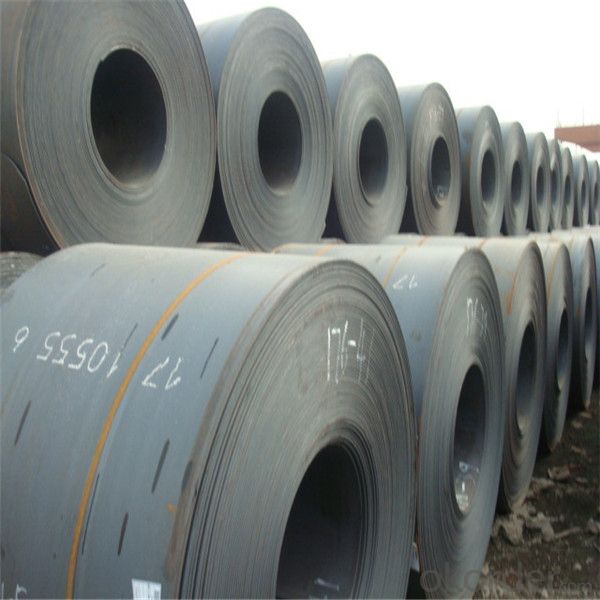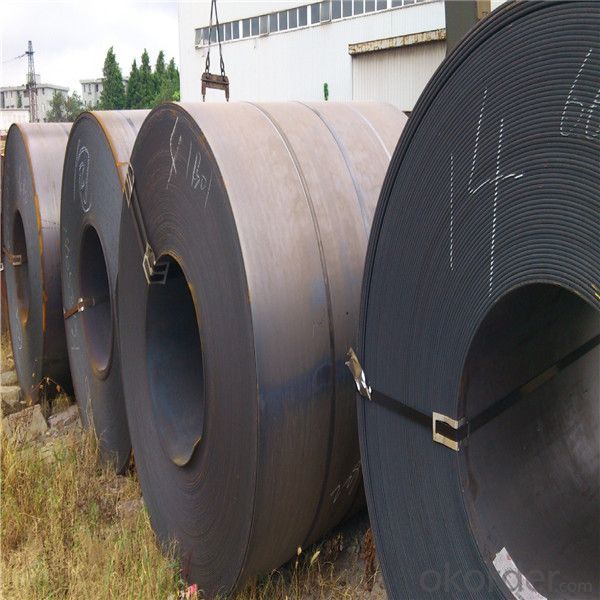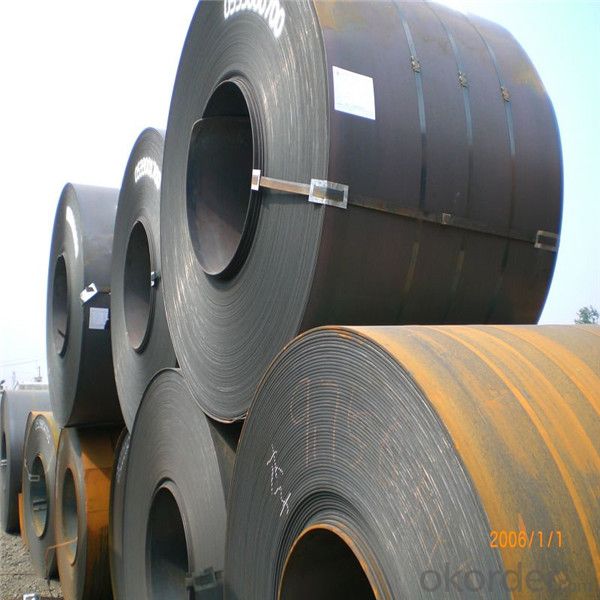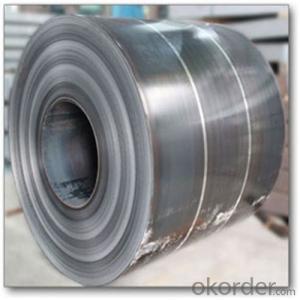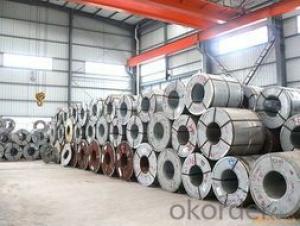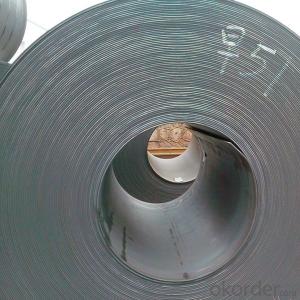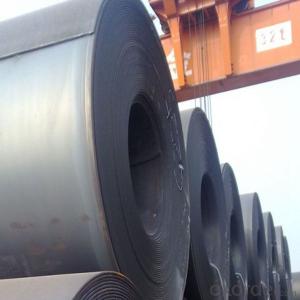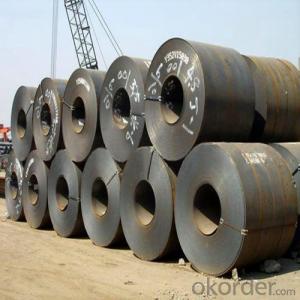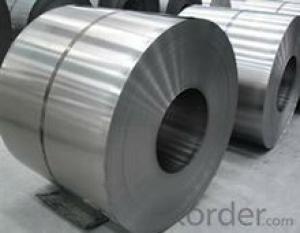Steel coil price for hot rolled different grade
- Loading Port:
- Tianjin
- Payment Terms:
- TT OR LC
- Min Order Qty:
- 50 m.t.
- Supply Capability:
- 1000 m.t./month
OKorder Service Pledge
OKorder Financial Service
You Might Also Like
Specification
Hot Rolled Steel A rolling process at temperatures over 1,000 degrees Fahrenheit is use to create hot rolled
steel. Steel products in Massachusetts that have been processed in this manner will have a blue-gray finish
that feels rough to the touch.
Hot rolled steel actually reconfigures itself during the cooling process, giving the finished product looser tolerances
than the original material and when compared to cold rolled steel products. Hot rolled steel is more malleable,
allowing it to be forced into a variety of different shapes.
Uses: Hot rolled products like hot rolled steel bars are used in the welding and construction trades to make
railroad tracks and I-beams, for example. Hot rolled steel is used in situations where precise shapes and
tolerances are not required
Standard and Grade :
Hot rolled steel coils | ||||
JIS | ASTM | SAE | EN | |
Commercial quality | G3131 SPHC | A569 A635 A659 A1011 CS Type A,B,C | 1006~1025 |
10111 DD11 |
Drawing quality | G3131 SPHD | 1006~1010 | 10111 DD12 | |
Deep drawing quality | G3131 SPHE | A622 A1011 DS Type A,B | 1006~1010 | 10111 DD13 DD14 |
General structure (T.S.<490N/MM2) | G3101 SS330 SS440 G3106 SM400A G3132 SPHT1 SPTT2 SPHT3 | A36 A283 GR.C A570 GR.30~40 A1001 SS GR.30~40 |
1010~1025 | |
General structure (T.S.≥490N/MM2) | G3101 SS490 G3106 SM490A SM490YA | A570 GR.45~50 A607 GR.45~70 A1011 SS GR.45,50 |
J1392 050X | |
|
Application :
Automobile Industry, electrical appliance, machinery manufacturing, container manufacturing, shipbuilding,
bridge, pipeline, and receive high acclaim from our customers for its excellent quality.
Packing:
Packaging Detail | The packing of coil consists of anti-damp paper ,PVC film ,hardboard paper , steel box , strapped with steel strips, fitted with locks and edge protectors and guarantees the optimal condition of the delivered goods. Each coil can be additionally fitted with wooden/steel skids(eye of the side) or wooden pallets(eye of the sky) |
Delivery Time | within 30 days of receipt of LC original or prepayment |
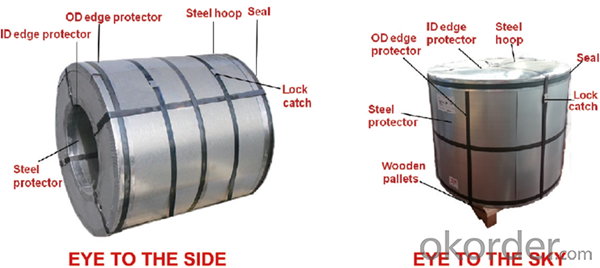
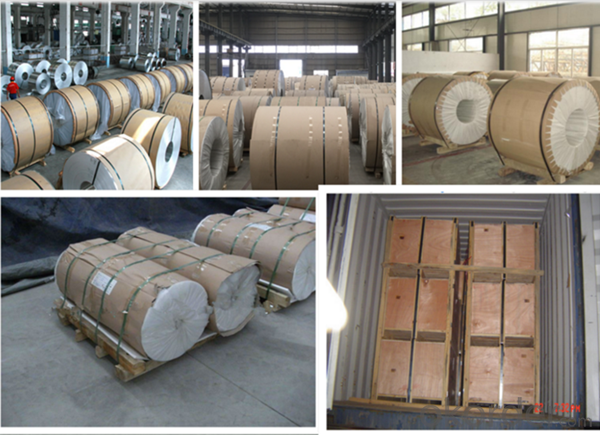
Our Services
MOQ | FCL, 25 metric tons per 20GP, can be assorted with different sizes. |
LCL for trial order is acceptable. | |
Price Term | EX-WORK, FOB China Port, CNF, CIF |
Payment | T/T, 30% advanced payment before production and balance before shipment; OR Irrevocable L/C at sight. |
Delivery Time | within 30 days of receipt of LC original or prepayment |
FAQ:
1. Can you offer OEM to me? What about MOQ?
Of course, we are a professional with OEM manufacturer for 9 years. the MOQ can be 50 ton/ order..
2. How to guarantee the quality of the products?
We have established the international advanced quality management system,every link from raw
material to final product we have strict quality test;We resolutely put an end to unqualified products
flowing into the market. At the same time, we will provide necessary follow-up service assurance.
3. How long can we receive the product after purchase?
Usually within thirty working days after receiving buyer’s advance payment or LC. We will arrange the
factory manufacturing as soon as possible. The cargo readiness usually takes 15-25 days, but the
shipment will depend on the vessel situation.
4.Q: What is your terms of payment ?
We prefer LC at sight and 30%T.T in advance ,balance after the copy of B/L
- Q: What is the maximum width of a steel coil?
- The maximum width of a steel coil can vary depending on factors such as manufacturing capabilities and customer requirements. However, in general, steel coils can have a maximum width ranging from 30 inches to 96 inches or even wider.
- Q: How are steel coils used in the manufacturing of automotive hoods?
- Steel coils are used in the manufacturing of automotive hoods as they are shaped and formed into the desired hood design. These coils are processed through various stages such as cutting, stamping, and welding to create the hood's structure. The strength and durability of steel make it an ideal material for automotive hoods, ensuring they can withstand impacts and provide protection to the engine compartment.
- Q: I found this amazing kid on youtube - is he using nylon or steel strings?(I'm buying my first guitar! helpp)oh and is fingerstyle also possible in steel string guitar? does it hurt?(I might sound really stupid-..)thanks a lot
- Once you LEARN how to play a guitar.. you will know just how stupid that question sounded. CLASSICAL guitars use NYLON STRINGS and ACOUSTIC guitars use STEEL STRINGS and either type of string will make your fingers sore until you get some ca louses on them
- Q: Hi, I would like to know if steel is an important material in desalination plants. If it is, could you specify what type of steel is used (i.e. flat steel products, long steel products, etc). Thanks.
- yes stainless steel pipes
- Q: What minerals are mixed to make steel?
- It depends on the type of steel that you want. For example- A cold drawn carbon steel spring wire consists of Carbon,Silicon,Manganese,sulphur potassium. If you want to make an alloy steel you can also add chrome,vanadium , nickel etc. It depends on the combinations and percentages of each used.
- Q: Are steel buildings or homes better then wooden buildings? Why?
- Arch steel buildings are extremely easy to put up as compared to other conventional structures you don't need any type of heavy equipment to erect your steel arch buildings. Most of the people put their steel buildings up with the help of family or friends in just a couple of days.
- Q: How do steel coils contribute to the manufacturing of household appliances?
- Steel coils are an integral component in the manufacturing of household appliances. These coils, made from high-quality steel, play a crucial role in providing the necessary strength and durability required for the production of various appliances. One of the primary uses of steel coils in household appliances is in the construction of the appliance's body or frame. The coils are shaped and formed into the desired structure, providing a sturdy foundation for the appliance. This ensures that the appliance can withstand the rigors of everyday use and remain intact for an extended period. Moreover, steel coils are also used in the manufacturing of various components within household appliances. For example, in refrigerators and air conditioners, steel coils are utilized in the condenser and evaporator coils, which are responsible for the heat exchange process. These coils allow for efficient cooling or heating, ensuring optimal performance of the appliance. Furthermore, steel coils are also employed in the production of appliance interiors, such as oven racks, dishwasher baskets, and laundry machine drums. The strength and resistance provided by the steel coils help these components withstand heavy loads and repeated use, enhancing the overall longevity and reliability of the appliance. Additionally, steel coils contribute to the aesthetic appeal of household appliances. They can be shaped, molded, and coated to achieve various finishes, colors, and textures, enhancing the visual appeal of the appliance and making it more attractive to consumers. In summary, steel coils are crucial to the manufacturing of household appliances as they provide strength, durability, and resilience to the appliance's structure, components, and interiors. They play a vital role in ensuring the performance, reliability, and longevity of these appliances, making them an indispensable part of the manufacturing process.
- Q: my step father bought a big steel drum grill it has steel sheets (very thin) that go inbetween the flame and the food (closer to the flame) with that there the food will not cook, it does not get hot enough????? please help... what should we do
- that steel plate there is to try to keep the grease dripping of the food from making the grill flame up and burning the food. most all quality grills have something similar. you can take the plate out but your going to be prone to flame ups.
- Q: How are steel coils used in the manufacturing of food processing equipment?
- Steel coils are used in the manufacturing of food processing equipment as they provide strength, durability, and resistance to high temperatures. These coils are often used to construct the frames, structures, and components of food processing machinery, ensuring stability and reliability during the manufacturing process.
- Q: is there a type of steel that is stronger or does the rail represent the top of the line?
- No, train tracks are not made of the strongest steel. Actually, I believe they are made from a rather mild steel, maybe a high-carbon steel in the curves, but no means is this top of the line. Probably the best all around high strength steel, if you count hardness, tensile strength, shear, and yield is Eglin steel. It has a yield of about 245,000 psi an ultimate strength of around 293,000 psi a harness of 45.6 and an impact of about 75 joules. It's cheaper than exotic alloys, you can build aircraft with the stuff because weight isn't an issue and it's plenty strong enough. Its also very strong even in extreme temperatures. The material has a wide range of other applications, from missile parts and tank bodies to machine parts.
Send your message to us
Steel coil price for hot rolled different grade
- Loading Port:
- Tianjin
- Payment Terms:
- TT OR LC
- Min Order Qty:
- 50 m.t.
- Supply Capability:
- 1000 m.t./month
OKorder Service Pledge
OKorder Financial Service
Similar products
Hot products
Hot Searches
Related keywords
